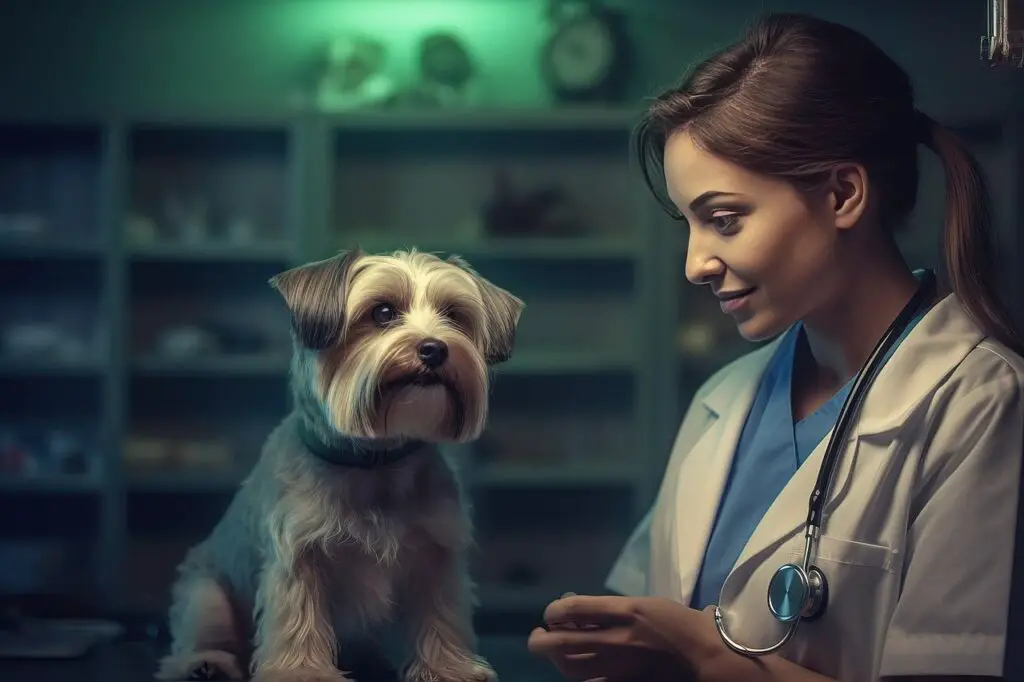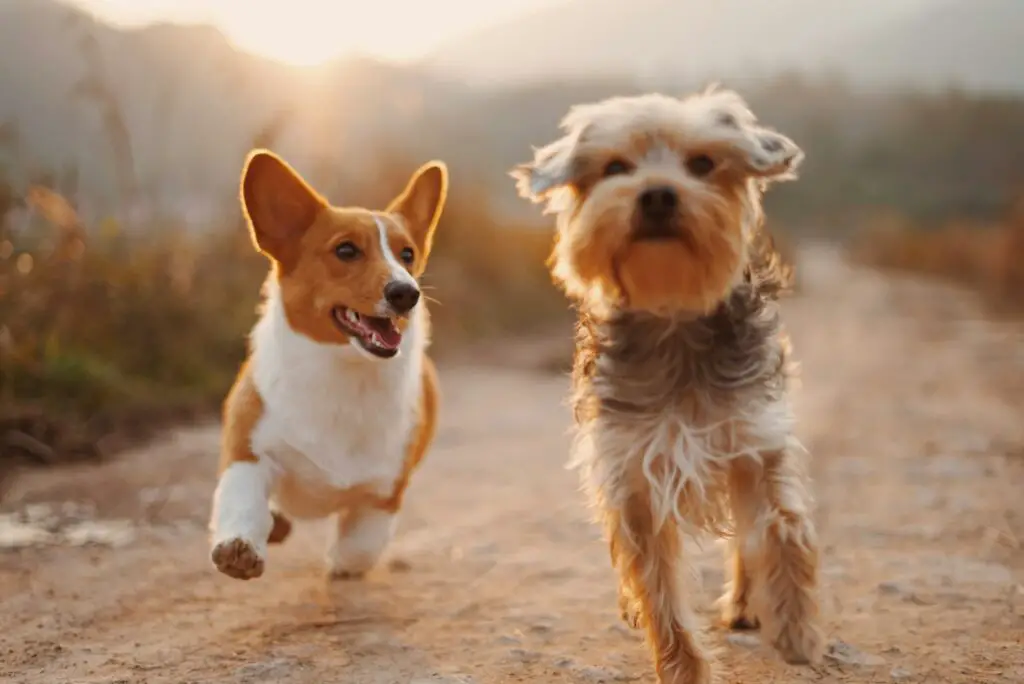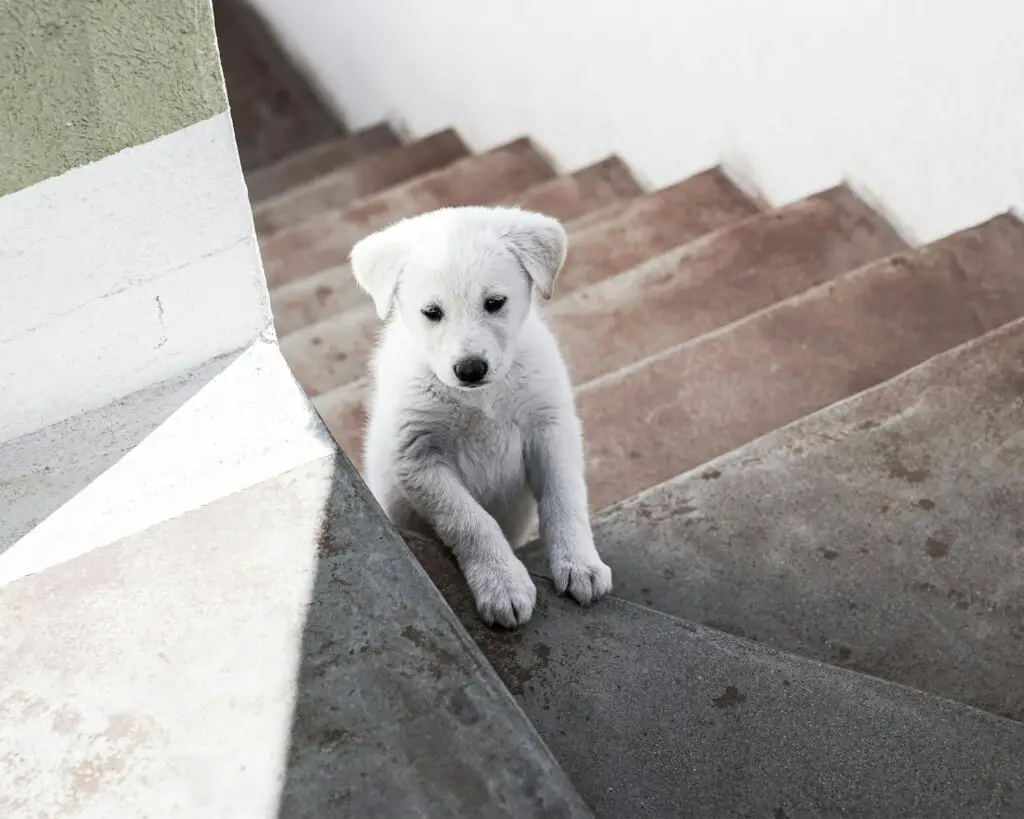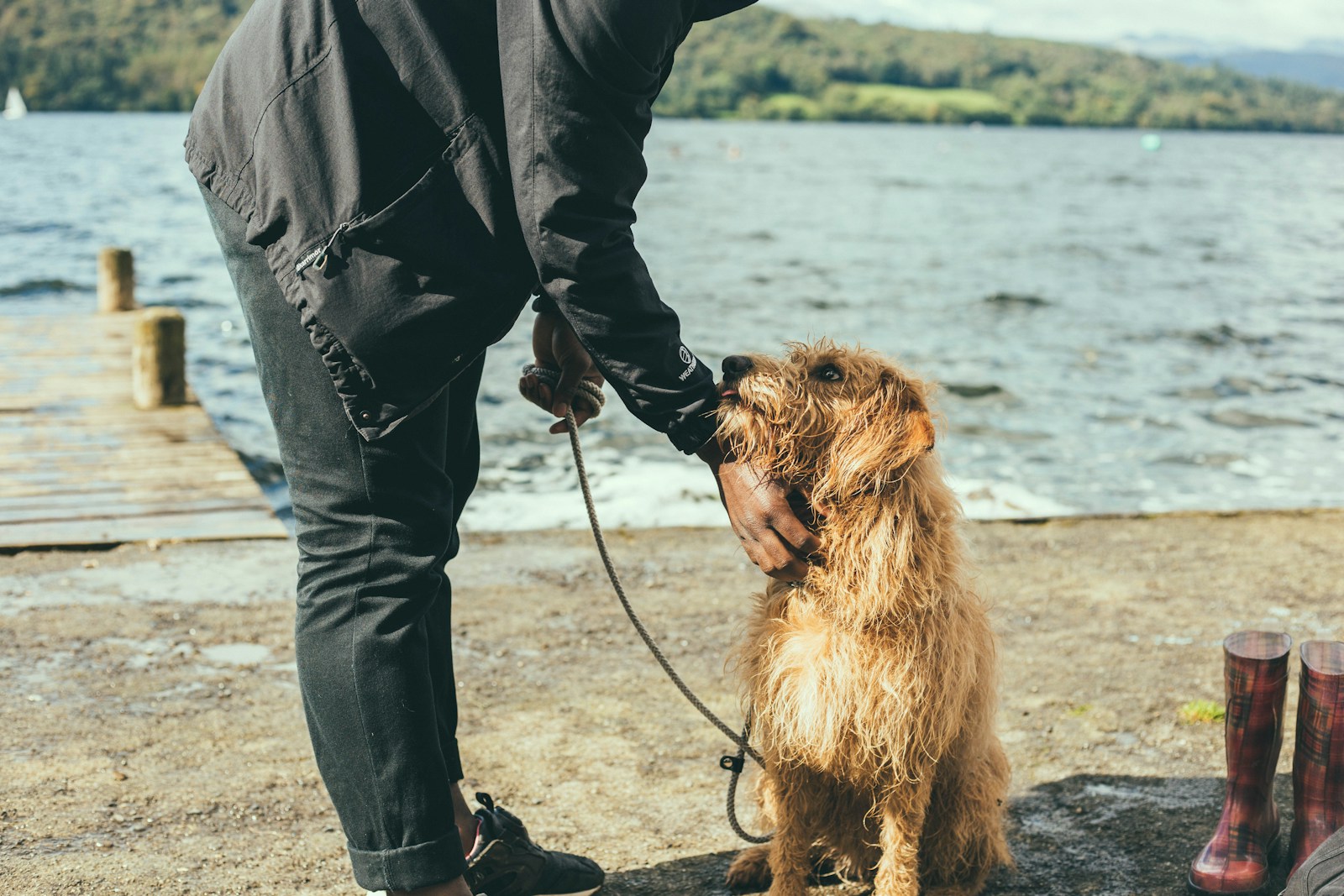Introduction: Benefits of Traveling with Pets
Traveling with your furry friend can be one of the most rewarding experiences you’ll ever have. Here are some benefits:
- Companionship: You never have to feel lonely when you have your pet by your side. They are your constant companion.
- Stress Relief: Pets are great at calming anxiety. Having your pet with you can make a stressful trip much more bearable.
- Routine Maintenance: Keeping your pet nearby helps you stick to their regular feeding, walking, and bathroom schedules.
- Safety: Believe it or not, pets can add a layer of security to your travels. Dogs, in particular, can be good deterrents against potential threats.
- Exploration Encouragement: Pets need exercise, so they encourage you to get out and explore new areas you might otherwise overlook.
- Social Interactions: Pets are great ice-breakers. You’re likely to meet other travelers, pet owners, and locals when you’re out and about.
- Healthier Lifestyle: Walking your dog means more physical activity for you. Double win!
- Emotional Support: The calming presence of a pet can be comforting, making you feel more secure and less anxious.
- New Experiences: Your pet will get to experience new sights, smells, and sounds, which can be enriching for them.
Traveling with your pet is not only beneficial for you but also for them. Adventures await!
Planning Your Trip: Pet-Friendly Destinations and Accommodations
First things first, do a little research. When you’re planning to bring your furry buddy along, it’s not enough to just pick a destination that you like. You need to make sure it’s friendly to pets.
Choosing Pet-Friendly Destinations
- City Parks & Trails: Look for cities with parks and walking trails that are pet-friendly.
- Beaches: Some beaches welcome dogs, but others have restrictions. Check beforehand.
- Local Attractions: Some areas have pet-friendly outdoor attractions or even dog-friendly tours.
Tips for Finding Pet-Friendly Hotels

- Reading Reviews: Check reviews on sites like TripAdvisor or Yelp where pet owners share their experiences.
- Pet Policies: Look for the hotel’s pet policy – some have weight limits, breed restrictions, or extra fees.
- Amenities: Seek out places that offer pet amenities like dog beds, treats, or even on-site parks.
Using Pet-Friendly Accommodation Websites
- BringFido: A fantastic resource for finding pet-friendly spots to stay.
- Airbnb: Use the pet filter to find listings that welcome pets.
- Booking.com: They’ve got a filter option specifically for pet-friendly sites too.
Questions to Ask Before You Book
- Any Extra Charges?: Are there additional fees for bringing your pet?
- Access Areas: Where exactly can your pet go? Inside the room, outside areas, etc.
- Local Services: Are there nearby vets or pet stores?
Preparing Your Pet for Their Stay
- Comfort Items: Bring their favorite blanket, bed, or toys.
- Snacks & Water: Don’t forget the treats and a travel water bowl.
- Pet Paperwork: Have their vaccination records on hand, just in case.
Unique Stays
- Camping Grounds: Many campgrounds are pet-friendly. Just make sure your pet is ready for the wild!
- Pet Resorts: Some hotels go above and beyond with pet spas and dog walking services.
Making It Fun
Remember this trip is for both of you! Plan activities that you both can enjoy. Whether it’s hiking, visiting parks, or just lounging at a café, ensure your pet stays part of the fun.
Taking the time to choose the right destination and accommodation can transform your trip into an unforgettable adventure for you and your pet.
Pre-Trip Vet Visits and Health Checks

Getting your furry friend prepped for travel begins with a vet visit. Your pet’s health is crucial, and a check-up ensures a smooth and stress-free journey. Here’s what you need to do:
- Schedule the Appointment Early
- Don’t wait until the last minute. Book a vet visit well ahead of your trip to address any potential health concerns.
- Vaccinations and Medications
- Confirm that all vaccinations are up-to-date. Discuss flea, tick, and heartworm preventatives.
- If your pet needs medication, make sure you have enough for the trip and some extra, just in case.
- Health Certificate
- Depending on your destination, a health certificate may be required. This document confirms your pet is disease-free and fit to travel.
- Check with your airline or travel agency for specific requirements.
- Discuss Travel Anxiety
- Talk to your vet about signs of travel anxiety. They might suggest calming sprays, anxiety jackets, or even meds for particularly nervous pets.
- Diet and Hydration Tips
- Ask about any diet changes needed before travel. Get recommendations on hydration—especially important for long journeys.
- Microchip and ID Tags
- If your pet isn’t already microchipped, consider doing it now. Update ID tags with your current phone number.
- Ensure your contact info on the microchip registry is up-to-date.
- Emergency Contacts and Vets
- Get a list of vets and emergency contacts in your destination area just in case. It’s always better to be prepared.
- Travel Crates and Comforts
- Ask your vet for advice on the best travel crates. Make sure it’s spacious, comfortable, and airline-approved if flying.
- Pack a small travel kit for your pet—favorite toys, blankets, and anything that smells like home.
“It’s better to be over-prepared than to be caught off-guard.”
- Practice Runs
- If it’s your pet’s first time traveling, do a few practice runs. Short car trips can help acclimate them to the idea of being on the move.
- Monitor Health Post-Trip
- After your trip, monitor your pet for any signs of stress or illness. A follow-up vet visit can help address any post-travel issues.
A pre-trip vet visit can make all the difference in ensuring that both you and your pet have a stress-free experience.
Packing Essentials: What to Bring for Your Pet
When hitting the road with your furry friend, you want to make sure you’ve packed everything they need to stay happy and healthy. Here’s a handy list to keep you organized:
- Food and Water:
- Pack an ample supply of your pet’s regular food; sudden changes can upset their stomach.
- Bring enough water for the entire trip; don’t rely solely on pit stops.
- Include collapsible bowls for easy feeding and drinking on the go.
- Health and Safety:
- Keep a copy of your pet’s medical records, including vaccination history.
- Bring any medications your pet might need, along with dosing instructions.
- A first-aid kit designed for pets can be a lifesaver in minor emergencies.
- Comfort Items:
- Pack your pet’s favorite blanket or bed to make unfamiliar spots feel more like home.
- Include toys that can help keep your pet occupied during the journey.
- Treats and chews to reward good behavior or calm them if they get anxious.
- Hygiene Necessities:
- Bring waste bags for dogs, and a portable litter box and litter for cats.
- Towels and wipes for any spills or quick clean-ups.
- Grooming essentials like a brush or comb to keep them looking and feeling good.
- Travel Gear:
- A secure and comfortable carrier or crate for safe transport.
- “A stressed pet is more likely to get car sick,” says Dr. Smith, a vet with years of travel experience.
- Leash and harness for taking breaks and stretching during long trips.
- Seat covers or pet travel seats to protect your vehicle and keep your pet comfortable.
- A secure and comfortable carrier or crate for safe transport.
- Identification and Tracking:
- Updated collar ID tags with your contact information and any medical needs.
- Consider a microchip if your pet isn’t already chipped.
- A recent photograph of your pet in case they get lost.
Remember, happy pets make happy travels. Get everything ticked off this list, and you’re ready for a smooth adventure!
Transportation Tips for Different Modes: Car, Plane, Train

Car
- Plan Regular Breaks: If you’re on a long road trip, make sure to stop every 2-3 hours for a quick break. Your pet will appreciate the chance to stretch and relieve themselves.
- Crate or Harness: Keep your pet safe by using a crate or a harness that attaches to the seatbelt. It helps prevent them from becoming a distraction.
- No Heads Out the Window: It may look cute, but it’s risky. Debris and sudden stops can cause injuries.
- Don’t Leave Them Alone: Never leave your pet alone in the car, especially in extreme weather. Heatstrokes can happen faster than you think.
Plane
- Check Airline Policies: Different airlines have different pet policies. Some allow small pets in the cabin, while others only permit them in cargo.
- Get a Pet Carrier: Invest in an airline-approved pet carrier. Your furry friend should be able to stand up and turn around comfortably.
- Acclimate Beforehand: Try to get your pet comfortable with the carrier before the flight. Leave it open at home and encourage them to explore it.
- Stay Calm: Your pet can sense if you’re anxious. Keep your cool, and it’ll help them remain calm too.
- Need Documentation: Some airlines and destinations require health certificates and other documents. Make sure you’re all set in advance.
Train
- Know the Rules: Always check the train’s pet policy. Some allow pets in designated cars, while others have restrictions.
- Choose the Right Seat: If possible, book a seat with extra space or near the pet-friendly area.
- Leash and Carrier: Use a leash and carrier, so your pet remains secure and comfortable during the journey.
- Bring Essentials: Have all your pet’s essentials like food, water, and a favorite toy to keep them occupied.
- Accidents Happen: Be prepared for any messes. Carry wipes and disposable bags for quick clean-ups.
Creating a Comfortable Travel Environment for Your Pet
Traveling can be super stressful for pets, but setting up a comfy travel area can make a world of difference. Here’s how to make your pet’s journey as pleasant as possible:
Choose the Right Carrier or Crate
Picking the appropriate carrier or crate is essential. It should be spacious enough for your pet to stand, turn around, and lie down comfortably.
- Measured Space: Measure your pet to ensure the carrier is the right size.
- Ventilation: Good airflow is crucial. Look for carriers with plenty of ventilation.
- Soft Sides vs. Hard Sides: Soft-sided carriers are great for smaller pets and shorter trips. For larger pets or longer trips, a hard-sided crate might be better.
Bring Familiar Items
Pets find comfort in familiarity. Bringing a few of their favorite items can help reduce anxiety.
- Blanket/Toy: Pack their favorite blanket or toy.
- Scented Item: Include something that smells like home, such as an old T-shirt.
Comfortable Temperature
Keep the temperature in the vehicle comfortable for your pet.
- Climate Control: Use AC or heat as needed to maintain a pleasant temperature.
- Avoid Direct Sunlight: Place the carrier out of direct sunlight to avoid overheating.
Rest Stops
Pets need breaks just like humans do, especially on longer trips.
- Frequent Stops: Plan for stops every 2-3 hours to let your pet stretch and relieve itself.
- Safe Zones: Find safe places for potty breaks and walking.
Food & Water
Keep your pet hydrated and fed, but don’t overdo it right before or during the ride.
- Portable Dishes: Bring collapsible or portable dishes for easy feeding and watering.
- Moderation: Feed them a light meal a few hours before departure to prevent motion sickness.
Calm Environment
A calm environment helps minimize stress.
- Music: Play soft music or pet-friendly playlists.
- Avoid Loud Noises: Keep the sound levels low. Avoid honking or loud talking.
Safety First
Your pet’s safety must always come first.
- Seat Belts: Buckle up the carrier or crate to prevent it from moving.
- Back Seat Placement: Keep pets in the back seat for their safety.
Transforming your travel setup to be more pet-friendly doesn’t need to be complicated. A few thoughtful adjustments can keep your furry friend relaxed the whole way. Remember, a happy pet makes for a happier journey for everyone!
Managing Pet Anxiety and Stress During Travel

Traveling can be a big deal for your furry friend. To help them stay calm and comfy:
- Familiarization: Let your pet get familiar with their travel carrier or crate a few days before you hit the road. Leave it open in your living room with some treats and toys inside.
- Routine: Stick to their regular feeding and walking schedule as closely as possible. Pets thrive on routine, and maintaining it can help ease their nerves.
- Comfort Items: Bring along their favorite blanket, toy, or even an old shirt of yours. Having something that smells familiar can be super comforting.
- Calm Environment: Create a chill environment. Play some soothing music or white noise to muffle outside sounds. A comfy, quiet space can do wonders.
- Natural Remedies: Consider natural calming aids like pheromone sprays or calming collars. Some pet owners swear by products like these to reduce anxiety.
- Avoid Overfeeding: Don’t overfeed them right before the trip. A light meal a few hours before departure helps avoid nausea and discomfort.
- Breaks: If you’re driving, take regular breaks so your pet can stretch, relieve themselves, and get some air. Aim for every 2-3 hours, especially on long trips.
- Positive Reinforcement: Use treats and praise throughout the journey. Reward them for staying calm and behaving well.
- Avoid Sedatives: Unless your vet advises otherwise, avoid sedating your pet. Sedatives can have unpredictable side effects and might not address the underlying anxiety.
- Consult Your Vet: Speak to your vet ahead of time. They might have specific recommendations or can prescribe medications if needed. They know your pet’s medical history best.
By following these tips, you can make travel a more relaxing experience for both you and your pet, ensuring a smoother and happier journey.
Pet Safety: Keeping Your Pet Secure and Healthy
Traveling with pets can be fun, but you’ve got to make sure they’re secure and feeling their best. Here’s how:
- Choose the Right Carrier:
- Make sure it’s well-ventilated and roomy enough for your pet to move.
- Test it out before your trip. If they’re not comfortable, you’ll know.
- Consider getting one with a top-loading option for easier access.
- ID Tags and Microchips:
- Ensure your pet has up-to-date ID tags with your current contact info.
- Microchipping offers an extra layer of security. Keep your info up-to-date in the database, too.
- Hydration is Key:
- Carry plenty of bottled water and a portable bowl.
- Frequent water breaks help keep your pet hydrated and happy.
- Frequent Breaks:
- Plan pit stops every 2-3 hours for potty breaks and a bit of exercise.
- Never leave your pet alone in a parked vehicle, especially in warm weather.
- Secure Your Pet in the Car:
- Use a pet seat belt, car seat, or a secured carrier. It keeps them safe and reduces distractions.
- Comfort from Home:
- Bring along familiar items like their favorite blanket or toy.
- These familiar smells can help them feel more secure during the trip.
- First Aid Kit:
- Pack a pet-specific first aid kit, including bandages, antiseptic wipes, and any meds they might need.
- Familiarize yourself with basic pet first aid. It’s better to be prepared.
- Check Up Before You Go:
- Visit the vet for a pre-travel check-up. Update vaccinations and discuss any health issues.
- Ask your vet about travel-specific concerns, especially if you’re flying.
- Pet-Friendly Accommodations:
- Ensure your lodging is pet-friendly and meets your pet’s needs.
- Look for places with safe outdoor areas for play and exercise.
- Calming Treats and Products:
- Consider calming treats, sprays, or pheromone collars to ease travel anxiety.
- Test these out before your trip to gauge their effectiveness.
Keep these tips in mind, and you’ll be set for a smooth journey with your furry friend. Safe travels!
Etiquette and Rules: Navigating Public Spaces with Pets
Taking your pet out in public isn’t just about fun and games; it’s crucial to follow certain etiquette and rules to ensure a smooth experience for everyone. Here are some essential tips:
- Leash Up: Always use a leash in public places.
- This keeps your pet safe and under control.
- Not everyone loves pets, so it’s respectful to others.
- Know the Rules: Different places have different rules.
- Parks, beaches, and stores might have specific pet policies.
- Check and follow local regulations to avoid fines.
- Clean Up: Always clean up after your pet.
- Carry poop bags and dispose of them properly.
- Leaving waste behind is both unsanitary and inconsiderate.
- Be Mindful of Others: Not everyone will be comfortable around your pet.
- Respect personal space.
- Ask before letting your pet interact with others, especially kids.
- Training: Ensure your pet is well-behaved in public.
- Basic commands can prevent unwanted behavior.
- Socialize your pet with other animals and people.
- Health Check: Make sure your pet is healthy before heading out.
- Keep vaccinations up to date.
- An ill pet can spread diseases to others or worsen in a public space.
- Hydrate and Feed: Bring water and snacks for your pet.
- Long outings require hydration and energy for pets.
- Carry a portable bowl for convenience.
- Mind the Heat: Be cautious of temperature extremes.
- Hot pavements can burn paws; cold weather can harm them too.
- Consider booties or other protective gear if needed.
- Secure Travel: When traveling by car, secure your pet properly.
- Use pet seat belts or carriers.
- This keeps them safe and minimizes distractions for the driver.
- Emergency Plan: Always have a plan in case of emergencies.
- Know where the nearest vet or pet hospital is.
- Carry a basic first-aid kit tailored for pets.
Following these tips will help you and your pet enjoy public spaces without causing stress for yourself or others.
Dealing with Emergencies on the Road
Traveling with your pet can be unpredictable, so it’s crucial to be prepared for emergencies. Here’s how to handle common road issues when you’re traveling with your furry friend:
- Create an Emergency Kit:
- Keep a well-stocked emergency kit in your vehicle.
- Include items like pet-specific first aid supplies, extra food and water, a blanket, and any medications your pet may need.
- Don’t forget waste bags, and a list of emergency contacts.
- Know Pet-Friendly Emergency Services:
- Research and note pet-friendly emergency services along your route.
- Identify nearby veterinary clinics or animal hospitals before starting your journey.
- Use apps or websites to locate 24-hour vets.
- Handling Car Troubles:
- If your car breaks down, put your hazard lights on and move to a safe location, if possible.
- Keep your pet secure either in the car or in a carrier while you assess the situation.
- Consider getting roadside assistance that accommodates pets.
- Accidents and Injuries:
- In case of an accident, check your pet for injuries just as you would yourself.
- Make use of your pet first aid kit: clean wounds, apply bandages, and limit your pet’s movement until you can get professional help.
- Stay calm. Your pet can sense your stress which might make them anxious.
- Extreme Weather Conditions:
- Heat: Never leave your pet in a hot vehicle. Ensure you have portable fans, plenty of water, and cooling mats.
- Cold: Bring warm blankets and insulated carriers to keep your pet comfortable.
- Keep a close eye on behavioral changes indicating discomfort due to temperature.
- Lost Pet:
- Ensure your pet is microchipped and wears a collar with an ID tag.
- Have recent photos of your pet handy in case they get lost.
- Familiarize yourself with the area’s local animal control or shelters.
- Travel Delays:
- Pack extra supplies in case of delays. Extra food, treats, water, and comfort toys can help ease stress.
- Plan for breaks and ensure your pet gets out to stretch and relieve themselves.
- Calming a Stressed Pet:
- Carry a favorite toy or blanket to provide comfort.
- Consider using calming sprays or pheromones.
- Maintain a soothing demeanor and talk to your pet in a calm, reassuring voice.

By being ready for anything, you can ensure your trip with your pet remains enjoyable despite any hiccups that may come your way.
Post-Travel Care: Settling Back in at Home
- Reestablish Routine: As soon as you get back, try to get things back to normal. Feed your pet at their usual times and stick to their regular walking schedule to help them readjust.
- Hydrate: Make sure your pet has access to plenty of fresh water. Traveling can be dehydrating, and they might need an extra bowl or two to get back to their regular hydration levels.
- Inspect for Health Issues: Look over your pet for any signs of discomfort, unusual behavior, or physical changes. Check for ticks, scratches, or any other signs of distress that might have gone unnoticed during travel.
- Clean Up: Time to unpack and clean! Wash their bedding, toys, and any travel gear. This helps prevent any dirt, allergens, or pests they might have picked up along the journey from spreading in your home.
- Vet Visit: If you’ve traveled internationally or to an area known for pet diseases, it’s smart to schedule a quick vet checkup. Better safe than sorry, right?
- Comfort Items: Reintroduce their favorite comfort items, like a special blanket or toy. Familiar scents can provide a sense of security and help them feel more at home.
- Grooming: Give your pet a good grooming session. Brushing out their coat, trimming their nails, and even giving them a bath can help them feel fresh and comfortable after travel.
- Monitor Behavior: Keep an eye on your pet for a few days to gauge how they are adjusting. Look for signs of stress like excessive barking, scratching, or hiding.
- Relax Together: Spend some quality time bonding. Whether it’s cuddling on the couch, going for a walk, or playing a favorite game, your presence will help reinforce that they are back in their safe, happy place.
- Reward and Praise: Don’t forget to reward them for their good behavior during travel. Treats, pets, and positive reinforcement will make them feel loved and appreciated, helping ease the transition back to home life.
Conclusion: Making Memorable Journeys with Your Furry Friends
Traveling with pets is an adventure packed with fun and a little bit of chaos. But with a bit of planning and these tips, you’re well on your way to creating lasting memories.
- Prioritize Comfort: Your pets crave the comfort they feel at home. Bring along their favorite blanket or toy to help ease their anxiety during travel.
- Plan Regular Breaks: Make sure to schedule plenty of breaks during your trip. Give your pet time to stretch, hydrate, and relieve themselves. It’s a win-win for both of you.
- Stay Calm and Positive: Your pets pick up on your vibes. Stay calm, positive, and patient. This helps them feel more secure and relaxed.
- Pack Smart: Don’t forget essentials like food, water, bowls, medications, leashes, and waste bags. A well-packed pet travel bag makes everything smoother.
- Safety First: Ensure you have a secure crate or pet seat belt. Safety should always be top priority.
- Check Pet Policies: Always double-check the pet policies of your destinations. Nothing worse than arriving and finding out pets are not allowed.
- Keep Them Entertained: Just like us, pets get bored. Bring along interactive toys or chew items to keep them entertained.
- Hydrate Often: Keep a good supply of water and offer it frequently. Dehydration can sneak up quickly, especially in warm weather.
- Monitor Their Health: Keep an eye on their behavior. Know the signs of pet stress and take steps to mitigate it if you notice any issues.
- Enjoy the Ride: Remember to have fun! This is your special adventure with your furry friend. Embrace the moments, take photos, and create wonderful memories.
Block quote this – “The greatest journeys are those taken with a loyal friend by your side.” So, next time you hit the road, make sure your pet is ready to join in the adventure.


Leave a Reply